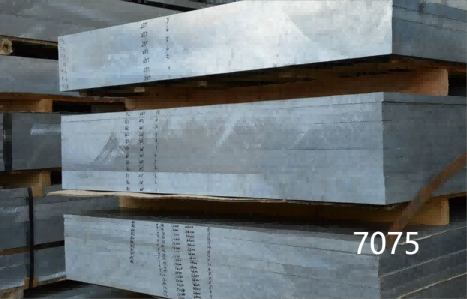Introduction
In the realm of material engineering, aluminum alloys are stalwarts, offering a blend of strength, durability, and versatility. Among these alloys, 6061 and 7075 stand out prominently, each boasting distinct properties that cater to diverse industrial applications. In this article, we embark on a journey to explore the nuances of these two aluminum alloys, dissecting their compositions, properties, and applications to shed light on their comparative strengths and weaknesses.

Composition
6061 and 7075 aluminum alloys derive their properties from carefully balanced compositions. 6061 is primarily composed of aluminum, magnesium, and silicon, with trace amounts of other elements. On the other hand, 7075 comprises aluminum, zinc, magnesium, copper, and trace elements. The disparity in elemental composition imparts unique characteristics to each alloy, influencing their mechanical and thermal properties.
Mechanical Properties
Mechanical strength is a pivotal aspect determining the suitability of aluminum alloys for various applications. 6061 aluminum alloy exhibits excellent weldability, formability, and corrosion resistance, making it a preferred choice for structural components in aerospace and automotive industries. Conversely, 7075 boasts superior strength, particularly in high-stress environments, rendering it indispensable in aircraft structures, military equipment, and high-performance sporting goods.

Thermal Properties
Thermal conductivity and heat treatment capabilities play a crucial role in the performance of aluminum alloys under elevated temperatures. While 6061 demonstrates good thermal conductivity and can be readily heat-treated to enhance its mechanical properties, 7075 exhibits lower thermal conductivity but offers superior heat treatment response, enabling the fabrication of intricate components with enhanced strength and durability.
Applications
The distinctive properties of 6061 and 7075 aluminum alloys render them indispensable across a myriad of industries. 6061 finds extensive use in the construction of aircraft wings, automotive chassis, bicycle frames, and consumer electronics owing to its lightweight nature and favorable mechanical characteristics. In contrast, 7075’s exceptional strength-to-weight ratio makes it a cornerstone in the aerospace sector, where it is utilized in critical components such as aircraft fuselages, landing gear, and missile parts.

Conclusion
In the perennial debate of 6061 vs 7075 aluminum alloys, there exists no clear victor, as each alloy serves a specific niche dictated by its unique properties. While 6061 excels in applications requiring moderate strength coupled with excellent formability and weldability, 7075 emerges as the go-to choice for demanding environments where uncompromising strength and resilience are paramount. Ultimately, understanding the nuanced differences between these alloys empowers engineers and manufacturers to make informed decisions, ensuring optimal performance and reliability across diverse industrial landscapes.


